Mercedes EQE vs VW ID.7 – Which car suits you better?
Compare performance, boot capacity, efficiency and price at a glance.
Find out which car is the better choice for you – Mercedes EQE or VW ID.7?
Costs and Efficiency:
Price and efficiency are key factors when choosing a car – and this is often where the real differences emerge.
VW ID.7 has a noticeable advantage in terms of price – it starts at 46400 £, while the Mercedes EQE costs 57600 £. That’s a price difference of around 11213 £.
In terms of energy consumption, the advantage goes to the VW ID.7: with 13.60 kWh per 100 km, it’s slightly more efficient than the Mercedes EQE with 15.80 kWh. That’s a difference of about 2.20 kWh.
As for range, the VW ID.7 performs hardly perceptible better – achieving up to 708 km, about 17 km more than the Mercedes EQE.
Engine and Performance:
Power, torque and acceleration say a lot about how a car feels on the road. This is where you see which model delivers more driving dynamics.
When it comes to engine power, the Mercedes EQE has a decisively edge – offering 625 HP compared to 340 HP. That’s roughly 285 HP more horsepower.
In acceleration from 0 to 100 km/h, the Mercedes EQE is convincingly quicker – completing the sprint in 3.50 s, while the VW ID.7 takes 5.40 s. That’s about 1.90 s faster.
In terms of top speed, the Mercedes EQE performs slightly better – reaching 220 km/h, while the VW ID.7 tops out at 180 km/h. The difference is around 40 km/h.
There’s also a difference in torque: Mercedes EQE pulls distinct stronger with 950 Nm compared to 679 Nm. That’s about 271 Nm difference.
Space and Everyday Use:
Cabin size, boot volume and payload all play a role in everyday practicality. Here, comfort and flexibility make the difference.
Both vehicles offer seating for 5 people.
In curb weight, VW ID.7 is barely noticeable lighter – 2180 kg compared to 2375 kg. The difference is around 195 kg.
In terms of boot space, the VW ID.7 offers to a small extent more room – 532 L compared to 430 L. That’s a difference of about 102 L.
When it comes to payload, Mercedes EQE noticeable takes the win – 600 kg compared to 465 kg. That’s a difference of about 135 kg.
Who wins the race?
The Mercedes EQE proves to be dominates this comparison and therefore becomes our DriveDuel Champion!
Mercedes EQE is the better all-rounder in this comparison.
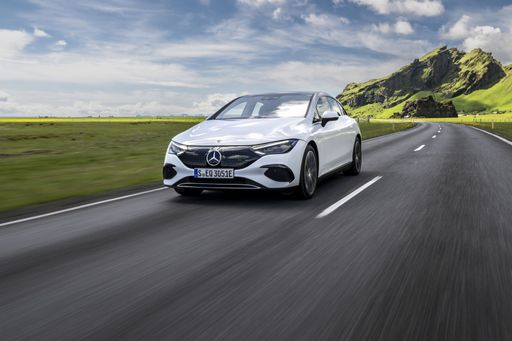
Mercedes EQE
Mercedes EQE
The Mercedes-Benz EQE epitomises the brand's commitment to luxury and electric mobility, offering a seamless blend of cutting-edge technology and elegant design. Inside, occupants are treated to a sophisticated cabin that combines high-quality materials with state-of-the-art infotainment features, ensuring a refined driving experience. On the road, the EQE impresses with its smooth, quiet ride and impressive agility, making it a standout choice for those seeking both comfort and sustainability.
details @ group-media.mercedes-benz.com
@ group-media.mercedes-benz.com
 @ group-media.mercedes-benz.com
@ group-media.mercedes-benz.com
 @ group-media.mercedes-benz.com
@ group-media.mercedes-benz.com
 @ group-media.mercedes-benz.com
@ group-media.mercedes-benz.com
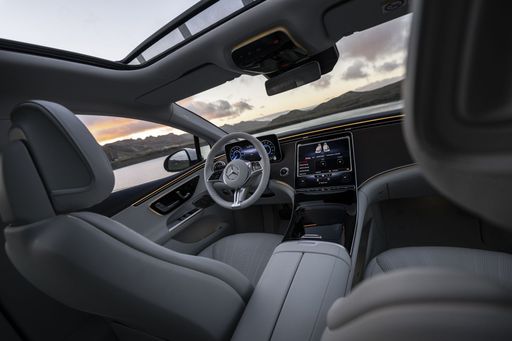 @ group-media.mercedes-benz.com
@ group-media.mercedes-benz.com
VW ID.7
The VW ID.7 represents a significant step forward in Volkswagen's electric vehicle lineup, offering an elegant design combined with advanced technology features. This electric saloon showcases a sleek aerodynamic profile, prioritising both performance and efficiency. Inside, drivers will appreciate the spacious and modern cabin, equipped with intuitive controls and connectivity features for a seamless driving experience.
details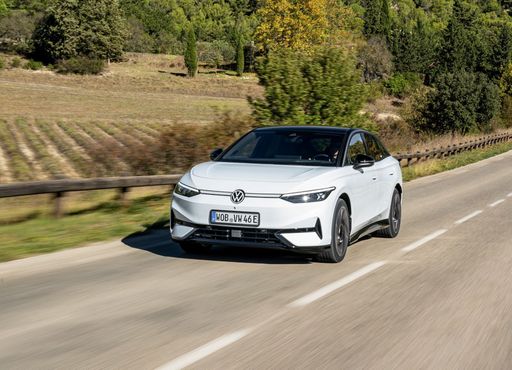 @ Volkswagen.de
@ Volkswagen.de
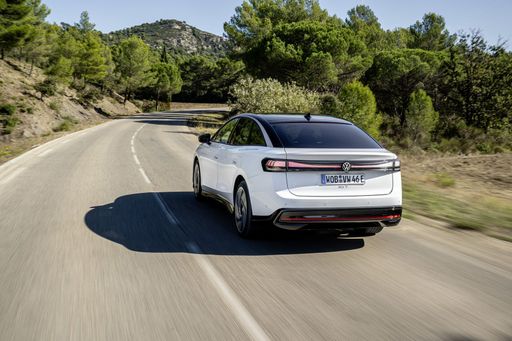 @ Volkswagen.de
@ Volkswagen.de
 @ Volkswagen.de
@ Volkswagen.de
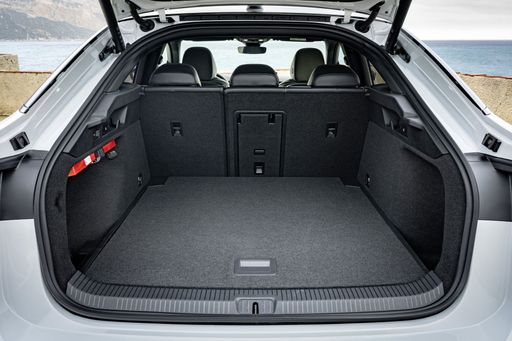 @ Volkswagen.de
@ Volkswagen.de

|

|
|
|
|
Costs and Consumption |
|
|---|---|
|
Price
57600 - 94900 £
|
Price
46400 - 54200 £
|
|
Consumption L/100km
-
|
Consumption L/100km
-
|
|
Consumption kWh/100km
15.8 - 20.7 kWh
|
Consumption kWh/100km
13.6 - 16.2 kWh
|
|
Electric Range
502 - 691 km
|
Electric Range
594 - 708 km
|
|
Battery Capacity
90.5 - 96 kWh
|
Battery Capacity
77 - 86 kWh
|
|
co2
0 g/km
|
co2
0 g/km
|
|
Fuel tank capacity
-
|
Fuel tank capacity
-
|
Dimensions and Body |
|
|---|---|
|
Body Type
Sedan
|
Body Type
Hatchback
|
|
Seats
5
|
Seats
5
|
|
Doors
4
|
Doors
5
|
|
Curb weight
2375 - 2540 kg
|
Curb weight
2180 - 2325 kg
|
|
Trunk capacity
430 L
|
Trunk capacity
532 L
|
|
Length
4946 - 4964 mm
|
Length
4961 mm
|
|
Width
1961 mm
|
Width
1862 mm
|
|
Height
1492 - 1510 mm
|
Height
1535 - 1536 mm
|
|
Max trunk capacity
-
|
Max trunk capacity
1586 L
|
|
Payload
545 - 600 kg
|
Payload
460 - 465 kg
|
Engine and Performance |
|
|---|---|
|
Engine Type
Electric
|
Engine Type
Electric
|
|
Transmission
Automatic
|
Transmission
Automatic
|
|
Transmission Detail
Reduction Gearbox
|
Transmission Detail
Reduction Gearbox
|
|
Drive Type
All-Wheel Drive, Rear-Wheel Drive
|
Drive Type
Rear-Wheel Drive, All-Wheel Drive
|
|
Power HP
265 - 625 HP
|
Power HP
286 - 340 HP
|
|
Acceleration 0-100km/h
3.5 - 6.9 s
|
Acceleration 0-100km/h
5.4 - 6.6 s
|
|
Max Speed
210 - 220 km/h
|
Max Speed
180 km/h
|
|
Torque
550 - 950 Nm
|
Torque
545 - 679 Nm
|
|
Number of Cylinders
-
|
Number of Cylinders
-
|
|
Power kW
195 - 460 kW
|
Power kW
210 - 250 kW
|
|
Engine capacity
-
|
Engine capacity
-
|
General |
|
|---|---|
|
Model Year
2024 - 2025
|
Model Year
2023 - 2024
|
|
CO2 Efficiency Class
A
|
CO2 Efficiency Class
A
|
|
Brand
Mercedes-Benz
|
Brand
VW
|
What drive types are available for the Mercedes EQE?
Available configurations include All-Wheel Drive or Rear-Wheel Drive.
The prices and data displayed are estimates based on German list prices and may vary by country. This information is not legally binding.
